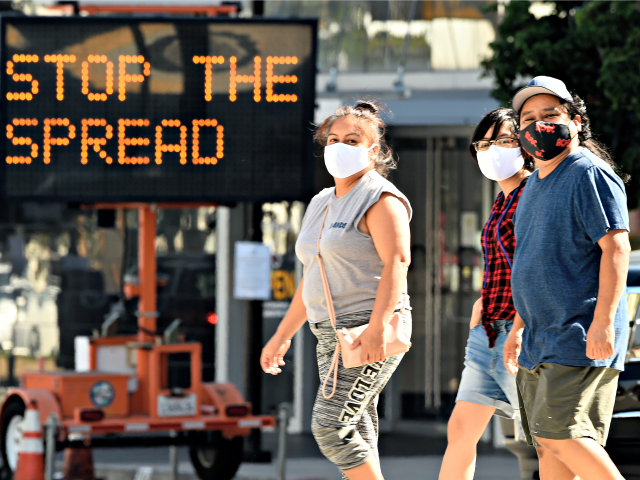The U.S. Centers for Disease Control and Prevention (CDC) said this week it erroneously published new guidance acknowledging that the coronavirus spreads through tiny particles that can linger in the air and travel beyond six feet.
CDC officials have been saying for months that the virus primarily spreads between people in close contact (within about 6 feet) via large droplets produced when an infected person coughs, sneezes, or talks that end up in the mouths or noses of people nearby.
Those recommendations prompted social distancing (six feet apart) and mask-related rules.
Nevertheless, on Friday, the agency reportedly added that tiny particles (aerosols) can travel beyond six feet could spread the virus.
Come Monday, the CDC abruptly dropped its new guidance and reverted to its position that the people mainly transmit the disease to others nearby through large droplets.
The edited CDC webpage now says:
A draft version of proposed changes to these recommendations was posted in error to the agency’s official website. CDC is currently updating its recommendations regarding airborne transmission of SARS-CoV-2 (the virus that causes COVID-19). Once this process has been completed, the update language will be posted.
On Monday, the World Health Organization (W.H.O.) revealed that it had reached out to the CDC about its update.
Dr. Mike Ryan, the executive director of the W.H.O’s health emergency program, told reporters that the United Nations organization had not seen any “new evidence” on the transmission of the virus through airborne particles.
The W.H.O contacted the CDC to “better understand” why it made the change, Ryan proclaimed.
According to the W.H.O, the virus can spread through respiratory droplets produced when an infected person coughs, sneezes, or breathes.
The international health body has said it monitors “emerging evidence” on the potential of airborne transmission.
W.H.O’s stance “on this remains the same,” Ryan told reporters, adding:
We’ve always said going back over months and months about the potential for different kinds of roots of transmission and particularly driven by the context, the proximity, the intensity, the duration and the potential for different forms of transmission.
“Unfortunately, an early draft of a revision went up without any technical review,” Jay Butler, the deputy director for infectious disease at the CDC, added, referring to the Friday update, according to the Washington Post.
“We are returning to the earlier version and revisiting that process,” Butler also said. “It was a failure of process at CDC.”
The CDC changes have reportedly fueled allegations that the Trump administration is pressuring the agency to support schools and businesses’ reopening and limit testing.
Last week, the agency did an about-face on its controversial recommendation that there is no need to test close contacts of COVID-19 patients if they do not show any symptoms.
The W.H.O. agreed with the guidance, but the CDC changed it anyway following backlash from Democrats, their mainstream media allies, and some public health officials who suggested Trump administration politics influenced the agency’s testing guideline revisions.
CDC officials have flip-flopped on several COVID-19-related recommendations, including the effectiveness of masks.
Monday’s change marked the “third major revision to CDC information or guidelines published since May,” the Washington Post noted.
The agency went from saying masks were virtually useless to recommending “that people wear masks in public and when around people who don’t live in your household.”
Studies linked to the U.S. National Institutes of Health (NIH) have suggested that the coronavirus can spread through the air.
In March, a New England Journal of Medicine-published study by scientists from the U.S. National Institutes of Allergy and Infectious Diseases (NIAID), an NIH component, found cough and sneeze droplets that carry COVID-19 can infect people for at least three hours.
NIH researchers also found in May that talking can produce virus particles that can linger in the air for eight to 14 minutes.

COMMENTS
Please let us know if you're having issues with commenting.